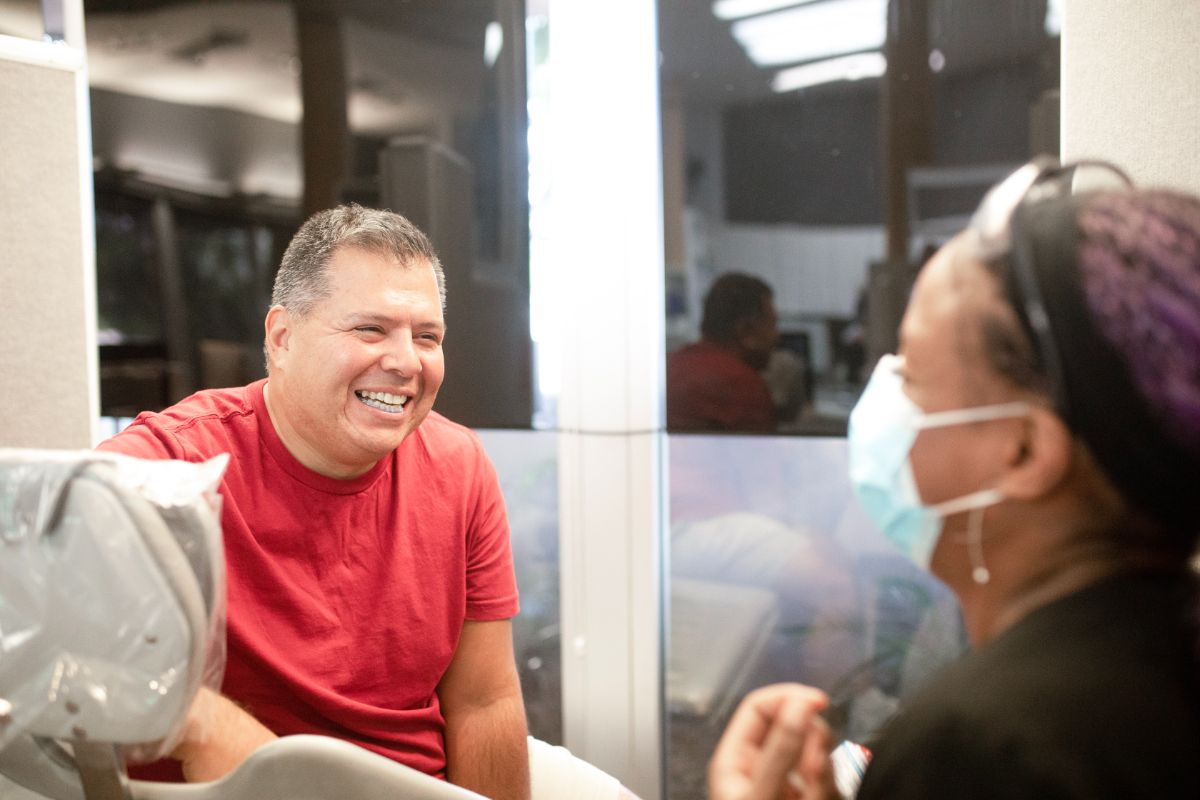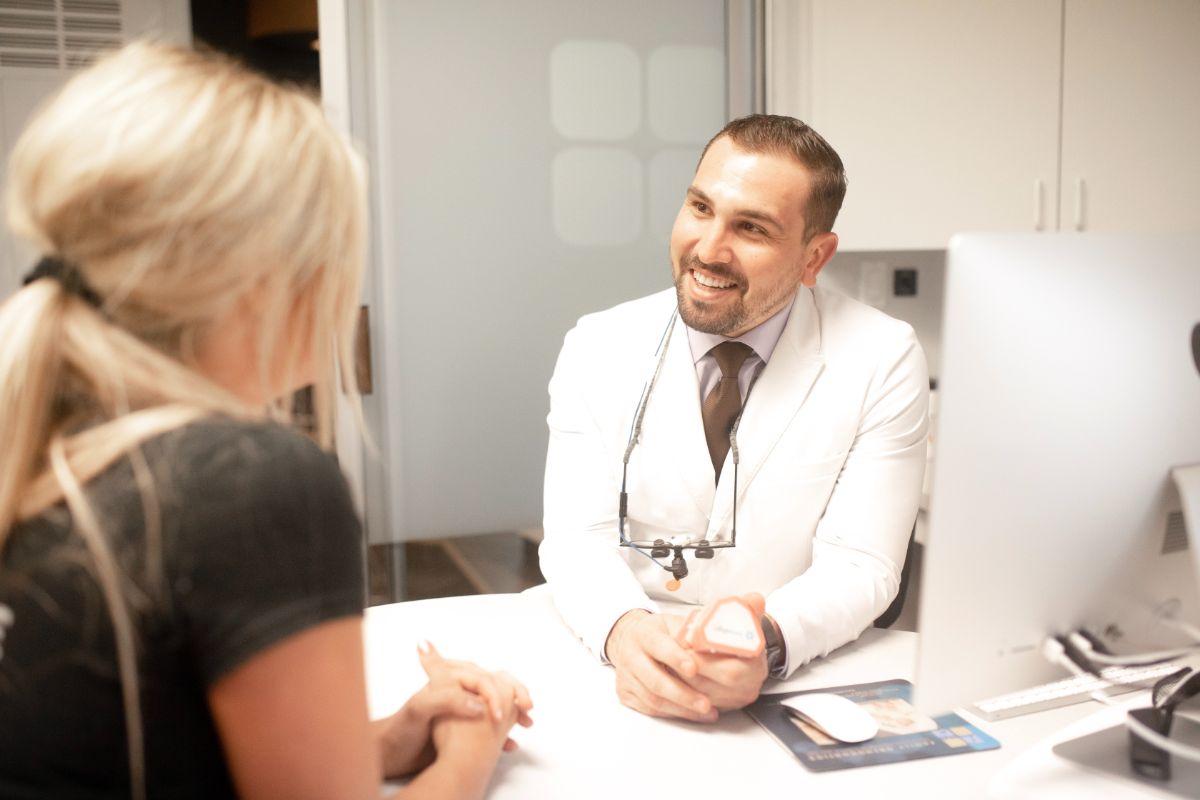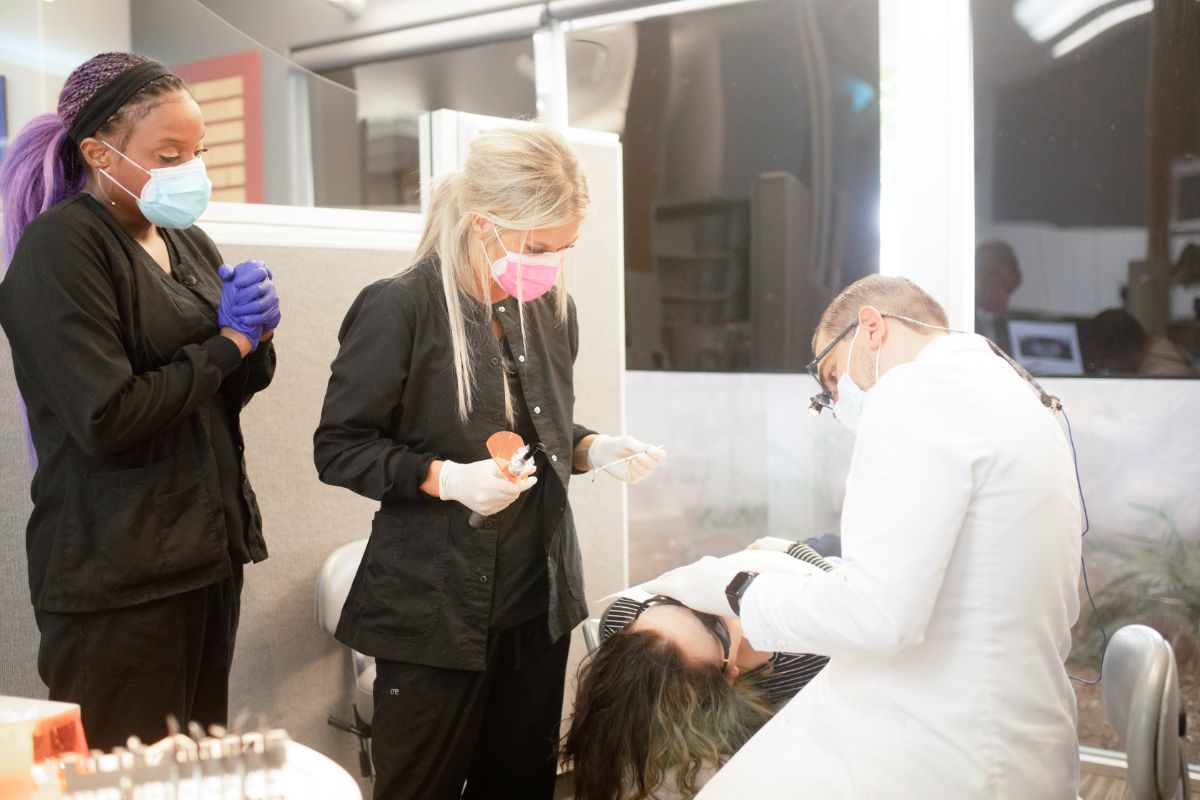There’s no denying how important sleep is. A night of rest recharges your mind and body, leaving you refreshed and alert in the morning. Healthy sleep habits also contribute to a healthy body, reducing the risk of certain diseases and helping your brain function optimally. While the average amount of sleep needed varies with age, most adults require 7-9 hours to feel their best. Babies, young children, and teens need even more sleep to ensure healthy growth and development.
Unfortunately, over 18 million Americans are losing out on the sleep they need due to obstructive sleep apnea, or OSA. This common sleep disorder can have profound consequences on mental and physical health, yet about 80 percent of these cases go undiagnosed. If you or a loved one have difficulty sleeping through the night, obstructive sleep apnea could be the culprit. The good news is, you don’t have to be one of the millions whose symptoms go unexplained and untreated!
For the last thirty years, Dr. Serrano has been providing patients throughout Arizona with sleep apnea solutions that work. Let’s take a closer look at what OSA is, how it can affect you, and what Serrano Orthodontics and Arizona Sleep Apnea Solutions can do to help you get a good night’s sleep again!
What is obstructive sleep apnea?
Obstructive sleep apnea, commonly referred to as OSA, is classified as a sleep-related breathing disorder. As the name implies, it occurs when a person’s airway becomes blocked as they are sleeping, causing them to stop breathing momentarily. The brain detects the lack of oxygen, prompting the body to take a breath. Someone suffering from OSA can experience hundreds of these apnea episodes every night, but may not remember any of them (although their bed partner often will!)
What are the symptoms of obstructive sleep apnea?
The symptoms of OSA can range from mild to quite serious. Some of the most common symptoms include the following.
- Loud snoring
- Excessive daytime sleepiness
- Hyperactivity in children
- Observed episodes of stopped breathing during sleep
- Abrupt awakenings accompanied by gasping or choking
- Difficulties with memory
- Difficulty concentrating during the day
- Unusual moodiness or irritability
- Frequently waking up at night
- Nighttime sweating
- Morning headaches
- Waking up with a sore throat or dry mouth
The rates of OSA in children are increasing, particularly among those who are overweight. Research has shown there may be a connection between asthma and sleep-disordered breathing, as it is very common for children with asthma to also snore.
Snoring is linked with worse asthma symptoms, which is not unusual since both of these conditions involve problems with the airway. Since we’ve seen links between lung and airway disorders and sleep-related breathing problems in adults, it makes sense that we would see similar findings in children. Several studies have suggested that successfully treating snoring and sleep-disordered breathing like OSA may improve asthma outcomes.

What causes obstructive sleep apnea?
An episode of OSA will occur when the muscles in the back of the throat relax too much, causing the airway to narrow or close as you breathe in. This impairs normal breathing temporarily. When your brain senses this impaired breathing, it will briefly rouse you from sleep so you can take a breath and reopen your airway. This is often accompanied by snorting, gasping, or choking that corrects itself fairly quickly. Most people suffering from OSA repeat this pattern multiple times throughout the night.
Are there any risk factors associated with obstructive sleep apnea?
Anyone can develop OSA at any point in their life, but certain factors will put you at an increased risk of this disorder. We’ve listed some of the most common ones below.
Excess weight—Obesity increases your risk for sleep apnea because the fatty tissue in your breathing passage can reduce the space for air to pass through. This makes it more likely that your breathing passage will collapse as you sleep.
Gender—Men are 2-3 times more likely than premenopausal women to have OSA. However, postmenopausal women tend to have roughly the same risk for obstructive sleep apnea as men do.
Age—Obstructive sleep apnea becomes more common as we age. This usually begins in young adulthood and increases until we hit our 60s-70s. At this point, the risk of obstructive sleep apnea generally levels off.
Upper airway crowding—Anything that makes the pharynx smaller can result in OSA, including a larger-than-average tongue, a small chin, big tonsils, or large glands in the pharynx.
How is obstructive sleep apnea diagnosed?
Dr. Serrano can screen for OSA in our office using a few different methods. You may be asked to complete an Epworth Sleepiness Scale test. We can also perform a visual screening, which will allow Dr. Serrano to observe the size and positioning of your tongue. He’ll also be able to see how much of the back of your throat is visible when the tongue is extended. Since tooth grinding can be a symptom of OSA, he’ll look for any noticeable wear to your teeth.
Depending on your symptoms and visual screening, Dr. Serrano may recommend that you complete a home sleep apnea test or do an overnight sleep study at a dedicated sleep center.
Our practice also uses 3D cone-beam computed tomography, or CBCT, to conduct airway analyses. This innovative technology provides us with a detailed depiction of the airway and craniofacial anatomy. In turn, Dr. Serrano will be able to identify any abnormal anatomy or conditions that could obstruct the airway. The CBCT we use is made for dental treatment and uses a lower radiation dose than the more traditional multi-detector CT that’s used in general medicine.
How is obstructive sleep apnea treated?
Many people experiencing OSA episodes don’t notice them as they’re happening. However, it’s still important for you to treat this disorder whenever possible. Untreated sleep apnea can cause fatigue, morning headaches, chronic acid reflux, and memory loss, among other symptoms. OSA also increases the risk of serious health problems, including high blood pressure, heart disease, stroke, and diabetes.
Once you have an official diagnosis for obstructive sleep apnea, Dr. Serrano will discuss treatment options with you. For most mild to moderate cases, oral appliance therapy is the most effective treatment option. The appliance fits in your mouth like a mouthguard or retainer while you’re sleeping, and pushes the jaw slightly forward to help maintain an open and unobstructed airway.
For more severe cases of OSA, continuous positive airway pressure (CPAP) therapy may be the best option. CPAP therapy involves wearing a face mask that will provide a constant flow of pressurized air to keep your upper airway passages open. While CPAP is the most commonly used method of treating obstructive sleep apnea, some people find the mask uncomfortable or loud. Fortunately, newer models are often somewhat smaller and less noisy than older machines. There are also a variety of masks designed for the best in individual comfort.
Surgical treatment options are available, but these are generally considered only if you have life-threatening sleep apnea or if no other therapies have been effective.

Get the good night’s sleep you’ve been dreaming of with Serrano Orthodontics
If you’ve been suffering from the effects of obstructive sleep apnea or simply suspect you have it, Dr. Serrano is here to help! Here at Serrano Orthodontics and Arizona Sleep Apnea Solutions, we’re passionate about giving our patients a good night’s sleep. Reach out today to schedule a consultation and get the rest you need to feel your best!
